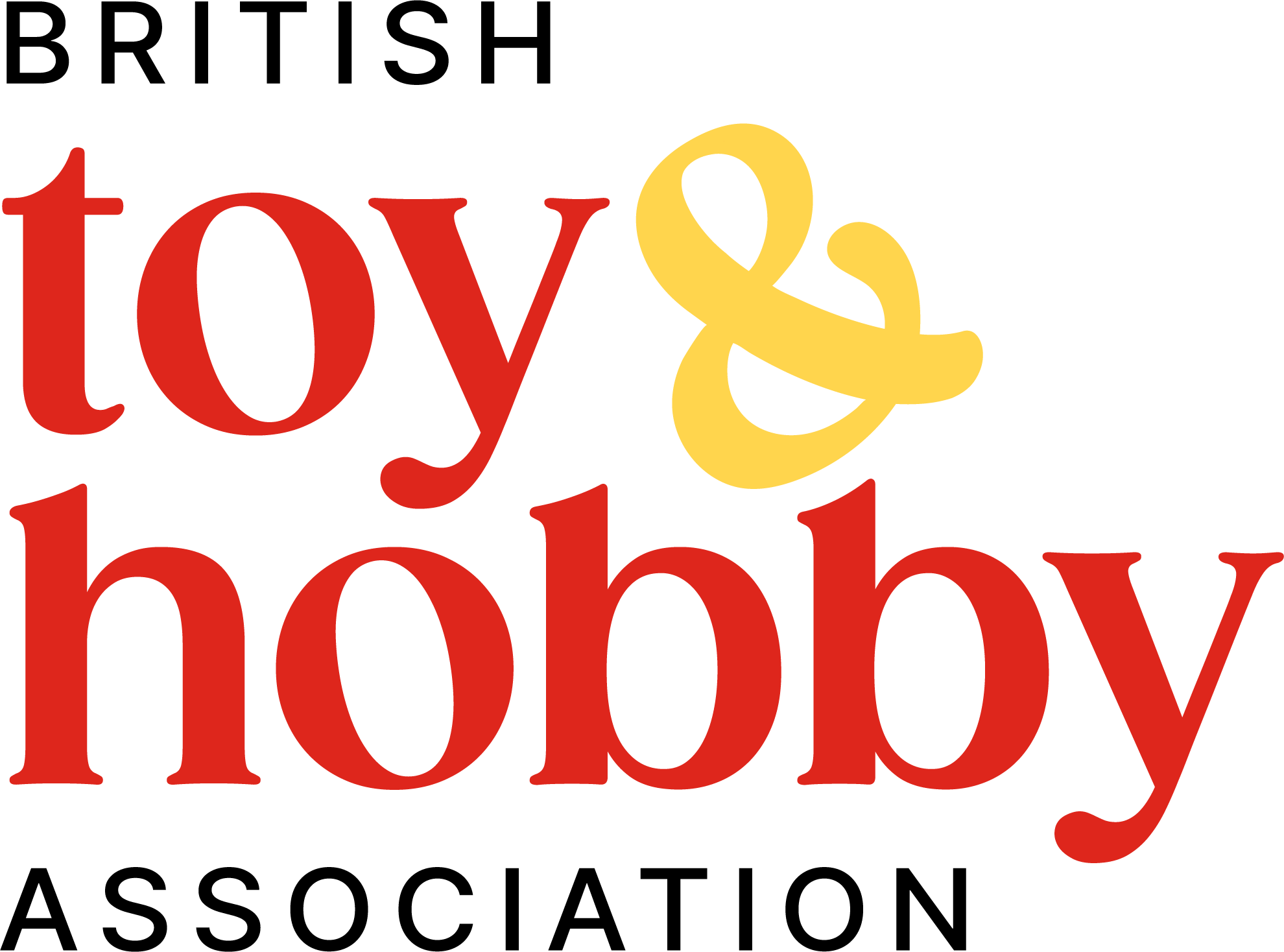Toddlers – 9-24 months
9 – 12 Months
Between 9 and 12 months your baby will become more co-ordinated gaining control of legs and feet. Babies at this stage start pushing up onto their hands and feet, “crawling” in that position and crawling on their stomach. This will lead your baby to develop the ability to pull into a standing position, walking with support (and one or two steps on their own), and standing for short periods without support. From now on they will become increasingly curious about the surrounding world; they will be keen to explore further their environment as their mobility will suddenly increase.
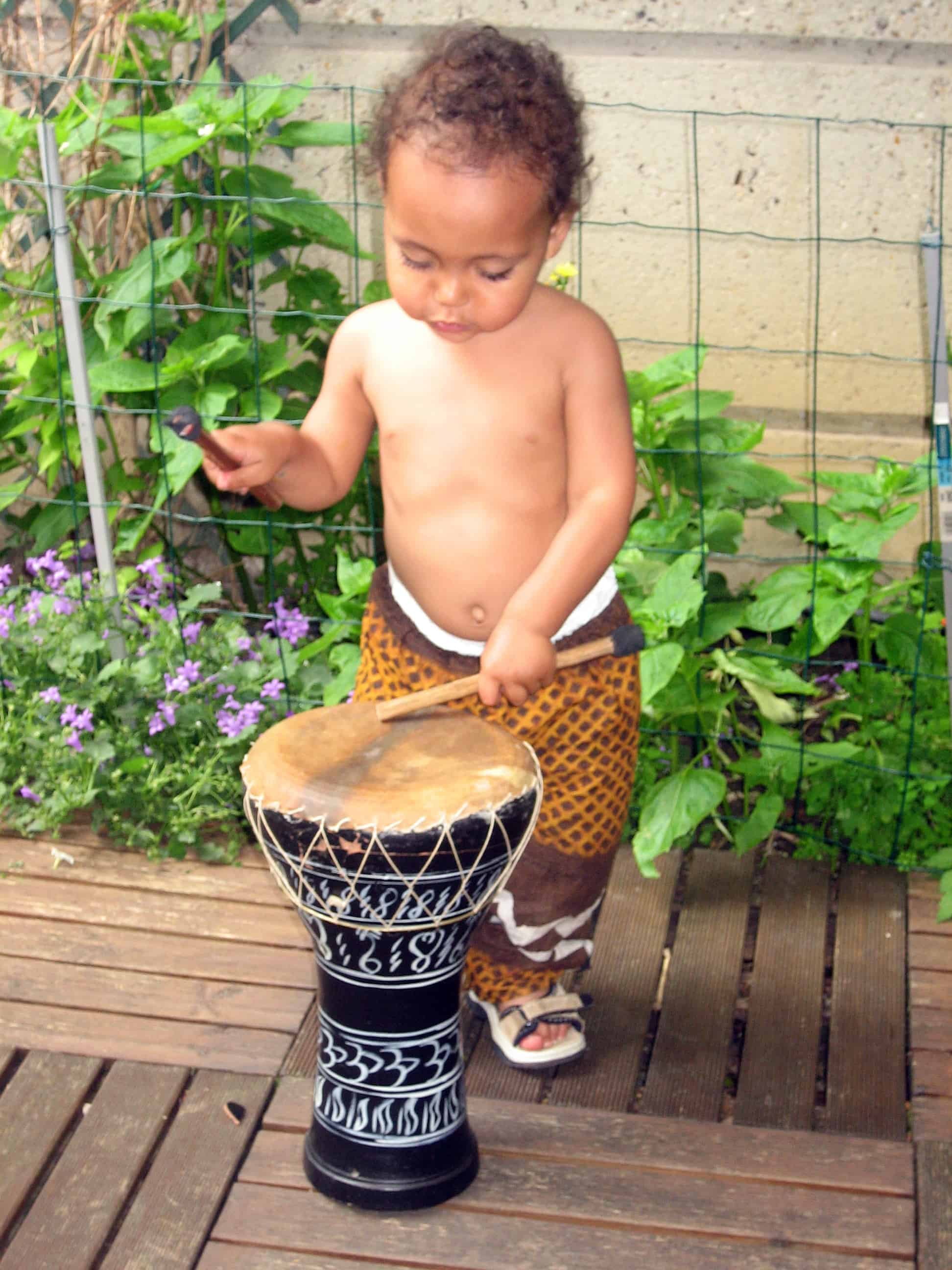 |
They will imitate sounds and gestures and repeat them when they want attention. They are likely to have one or two words, often ma and da and will pick up on exclamations like oh-oh! They will be able to understand much more than they can communicate back and can respond to simple commands. They will have a range of tones in their own “language” as they get closer to talking and will start to use gestures; shaking their head for no, waving goodbye, poking and pointing with their finger. They will be shy around strangers and become “clingy” for their primary care giver and will cry for their attention. They will start to push “boundaries” by testing parents’ responses to their behaviour. They will have “favourites”: people, toys, objects. |
| Toys with wheels, that toddlers can pull along or learn to walk with, are ideal as they help strengthen muscles. These types of toys also allow toddlers to model adult behavior and this will prove to be invaluable for their social development. This newly acquired freedom will allow your toddlers to investigate their surroundings and they will start learning to manage risk, just by falling over! Activity tables will help you to keep your toddler in one place for a little while – however always try to stimulate their interest by introducing new toys and games. At this stage toddlers love repetitive actions, and they can spend hours just putting shapes into a box. | 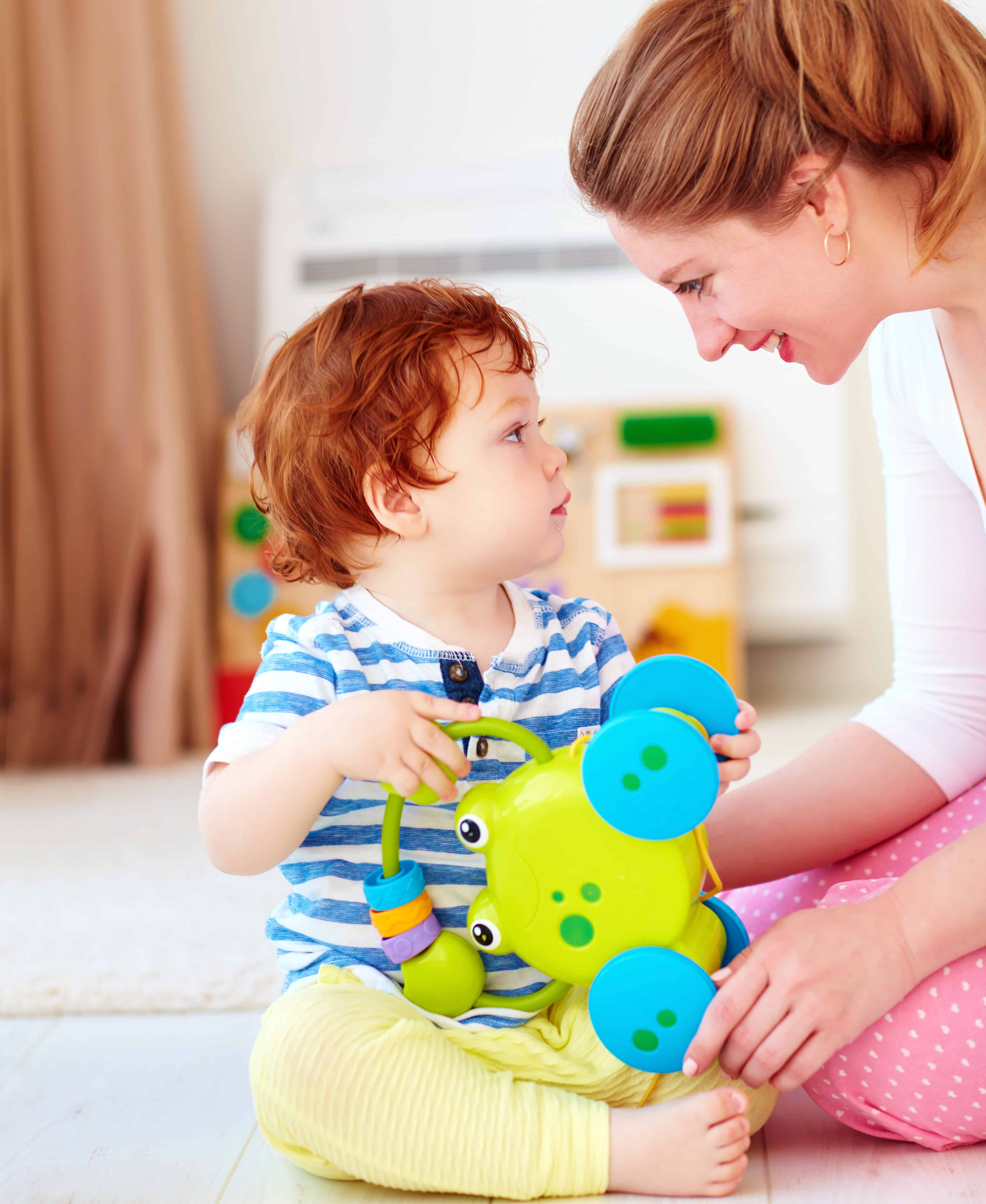 |
|
- Hide objects for your child to find, start simply and build up. They are curious about their environment and should love this game!
- Pat-a-cake
- Passing, throwing, banging, shaking, stacking or dropping objects
- Putting objects into a container and then taking them out again
- Rolling toys or objects to encourage a child to follow
- Musical instruments
- Picture books – kids love the bright colours and can learn many new words. Name the objects in a picture and get your child to look, and then later point at it
- Wheeled toys – helps them move around and explore their environment
- Ball pits – a fun and safe way for children to play and move around
- Play hide and seek – lots of fun and starts to teach ‘rules’
12-24 Months
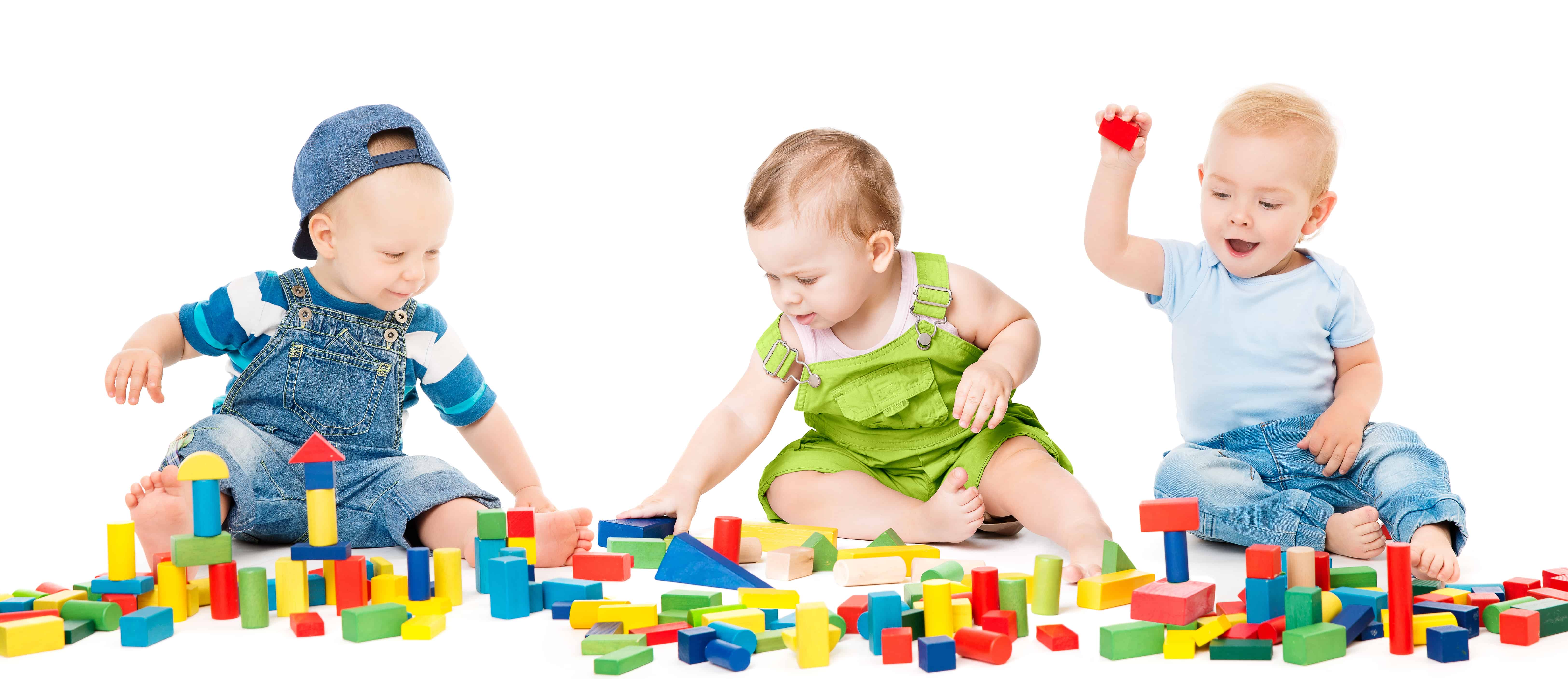 At this age your child will start to assert the first signs of independence. They are able to understand limited commands but will often do the opposite of what they are told and between one and three-years-of-age this may lead to temper tantrums.
At this age your child will start to assert the first signs of independence. They are able to understand limited commands but will often do the opposite of what they are told and between one and three-years-of-age this may lead to temper tantrums.
Most children are mobile by 18-24 months (although some do not walk until they are over 2 years old). If your child is ready, they will become more skilled at walking (able to walk for 10-20 minutes) and start running but will often use objects to get back to the floor or will collapse backwards. They will be able to creep up stairs, sit in a chair, and pass objects from one hand to the other (if given a second object to hold).
At about a year to eighteen months children start to talk and will want to rapidly increase the vocabulary available to them and will start to name many everyday items. Their facial movements will improve too and they will try to imitate adult expressions.
Children are very active at this age, so play that encourages movement and physical activity will help develop their fitness and muscle strength. Physical play is important for children of any age but according to the British Heart Foundation National Centre for Physical Activity and Heath, children that are taught to be active by the age of five will remain active throughout their lives. Encourage your child as much as you can as they are learning to become active. Physical activity develops strength, flexibility, stamina, balance and co-ordination which in turn allows for more physical activity. As well as developing physical conditioning active play has been shown to engage the mind and can encourage brain development.
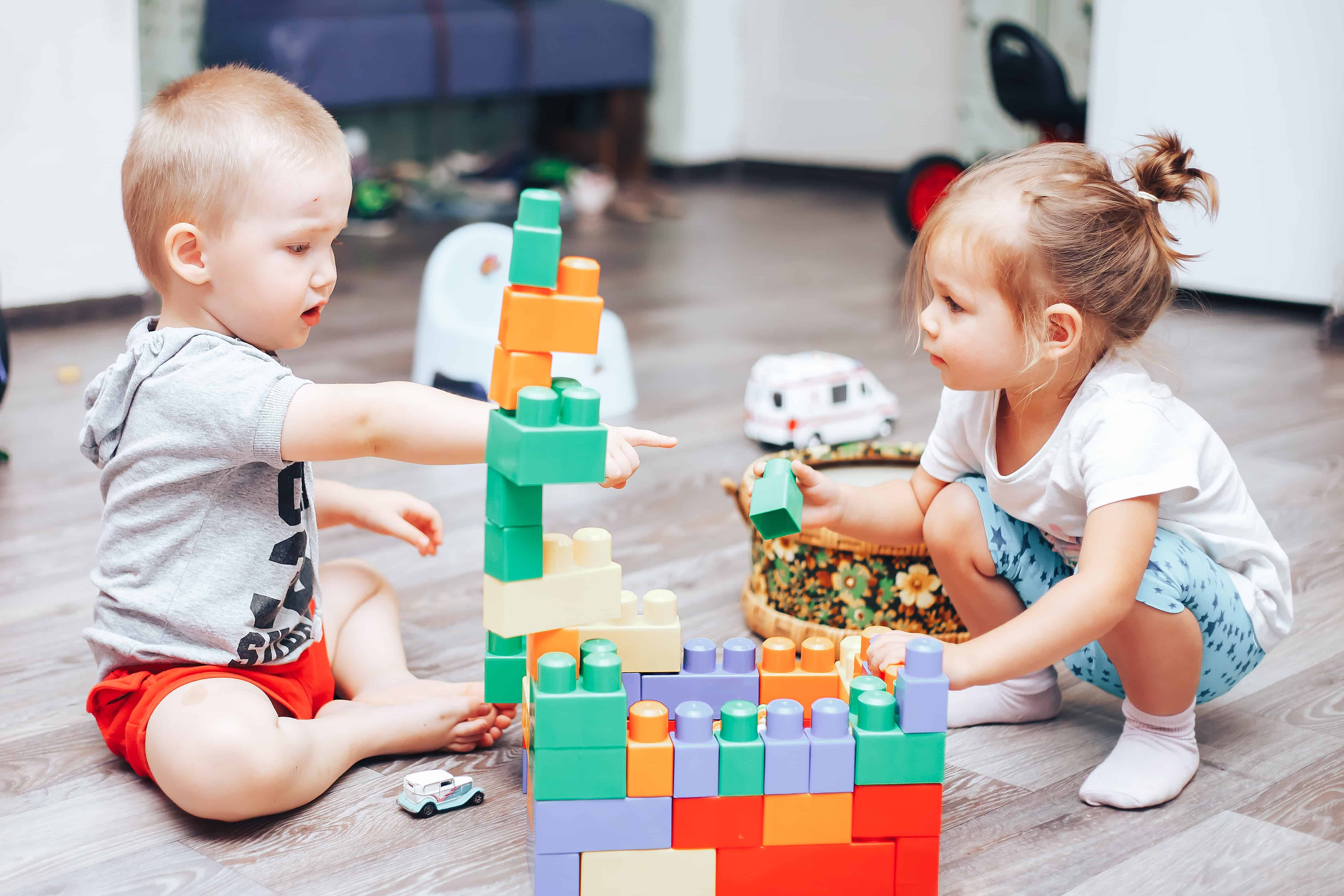
Language develops rapidly at this stage. Language is best learnt by modelling others, so talk to them lots. In addition toys which encourage talking or singing are likely to be beneficial – especially when others join in!
Lastly, toys that help toddlers copy their parents will be very popular. It increases their attachment to you which helps build their confidence to explore their environment more thoroughly.
- Make a game of putting toys away – this is a great age to learn to tidy up as it is a fun activity at this age and teaches the behaviour early on
- Name parts of the body and get your child to point at it – nose, ear, foot
- Hide and seek
- Find a hidden object
- Rhymes and songs
- Playing with a mirror/reflection
- Play and move dolls/figures
- Tea cups and saucers, teddy bears picnic
- Crayons/pencils/paints – great for concentrating on a task and being creative
- Books – especially flap books – kids love interacting with things and being read to by parents and will help to turn the pages.
- Swings and climbing equipment – encourages active play and risk management
- Building blocks and building towers of blocks
- Large puzzles or shape sorters
- Active play – running, ride on toys, kicking a ball, picking up and throwing
- Toy versions of adult objects (phones, cookers, etc) – helps kids mimic adult behaviour
- Soft play areas*
- Play dates*
* great way for kids to start socialising with each other and learning how to share and manage risk
Children put toys in their mouths less often but parents should still be aware of small items causing a choking hazard and should keep toys or items with small parts away from children until they are three-years-of-age.
Remember: All children develop at different rates so the ages and stages of development given here act as a general guide. You shouldn’t worry unduly if your child develops later at a particular skill; they often develop faster at something else. If you do have worries you should seek expert medical advice.
| When buying any toys for the under 3s always ensure you have checked the safety advice on the packaging. At this age children put things in their mouths and toys that have small parts are dangerous as they can cause choking. Avoid toys with a warning “not suitable for 0-36 months and if you have older children in the house keep the toys separated to avoid your baby swallowing small parts from older toys” |


 Facebook
Facebook Twitter
Twitter YouTube
YouTube Instagram
Instagram